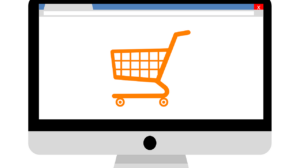In the 21st century, marketing has at last reached its final frontier by fully acknowledging the age of individuality. The “one-size-fits-all” approach is considered outdated as the primary focus of marketing campaigns shifted from making sales to making customers and users happy. Just as it should be.
Marketing practices are complex by nature, but if we had to really strip them to their core essence – we could say they are based on communication. They imply two-way relationships established between brands and customers. While in the past, these relationships used to give more power to the brands, today’s reality is different.
Customer behavior evolved and marketing kept up with the changes. Intelligent marketers now know that all great relationships are based on reciprocity, while doing something for a greater cause should not be kicked out of the equation. Hence, social marketing came into the spotlight and the importance of knowing your target audience became the talk of the town.
And so, we come to the truest marketing paradox of today: if brands want to be powerful, they have to give up their power and hand it over to their customers. That’s where personalization steps in.
Understanding Personalization and Segmentation
Personalization has become the main buzzword in the modern marketing world. In its early days, it was something brands turned to in order to differentiate themselves in the market, but now it has become the norm.
Did you know that a whopping 81% of consumers want brands to get to know them and determine when is a good time to approach them? I was amazed, too.
So, personalization is not even the question of “why” anymore, but “how”.
If you’re looking to scale your business, you need to get your social marketing strategy right. It is all about understanding how people behave, examining the reasons behind their actions, identifying their inner drivers and definitive deal breakers, etc. Having all of these answers is necessary in order to set the right communication tone for each of the separate groups and expose them to content they will be interested in.
The purpose of obtaining this information? To provide better user experience and woo your target audience, to influence or maintain desirable customer behavior, build brand loyalty, and eventually generate revenue. Segmentation is your most powerful weapon here.
In a nutshell, segmentation means analyzing and grouping your customers and prospects based on their commonalities, so you can figure out a way to reach them more effectively. Naturally, every group has to have one dominating factor that differentiates it from others.
Methods of Segmentation
With proper segmentation, you will be able to determine the essential 4 P’s of marketing: product, price, promotion, and place, so that your offers are tailored to specific needs. In the end – you want to create a win-win situation for everyone involved.
As you probably assumed, there are numerous ways to segmentize your audience pool. Let’s discuss the main ones:
Demographic
Demographic categories can include age, gender, employment status, income, marital status, religion, education, etc. The best thing you can do is to come up with an idea of your ideal customer and then see how it overlaps with the one you’re actually dealing with, so you can get a reality check and adapt your strategy. This can mean lowering your prices or changing your selling points to fit the budget and needs of your demographic group.
Want proof? Coca-Cola is a globally recognized soft drinks company that practically tried to brand the feeling of happiness. Their marketing approach goes heavy on emotions, but who do they target? Youth. Just take a closer look at their commercials and you’ll see a bunch of young people who are all about living in the moment, underlining how a cold bottle of Coke perfectly complements these fun-times. Coca-Cola is also a great example of a brand which recognized the importance of personalization and adopted the “me selling point” Martin Lindstrom (the author of “Brand Sense”) defined.
Geographic
Spaces and cultural contexts shape us, so knowing where your audience lives (or comes from) can mean a lot for your business. This does not include only the name of the state or city, but comprehending the essence of lifestyle in that particular area. Careful though, as this can be a sensitive matter if you’re targeting a culture that’s a lot different from where you come from. Never be superficial about it. You may even risk being accused of cultural appropriation, and your attempt to get closer to some group actually backfiring.
Psychographic and Lifestyle
Psychographic segmentation implies gathering personal information that could be of use when crafting your marketing message. It includes in-depth data about beliefs, social attitudes, political views, interests, tastes, and preferences. Paying attention to details might seem insignificant, but can in fact make a huge difference. For example, using the right colors can influence customer behavior while enriching your storytelling with analogies that are close to the narratives and interests of your target group – can build stronger relationships with them.
Behavior
Tracking customer behavior is mandatory if you want to gain control of your sales funnel. Let me explain this with an eCommerce example. Users browse through a website, check details about specific products, but don’t end up making a purchase. If your site uses cookies and this user happens to be your lead, a smart thing to do is to send him/her a personalized email. The right type of content is the key to retaining your customers.
Using the Right Tools
For gathering data and getting the most of it, you need to keep your eyes open and be creative. Be savvy when crafting order forms with optional fields that give you more information, keep track of the transaction history, launch short surveys or competitions, conduct interviews, and nurture interactions via social media. Do everything you can to create momentum where your audience will be comfortable to share a bit more about themselves.
As for tools, Google Analytics is your consumer-data-fetching mecca, but I personally believe most people don’t use the full potential of it, not by far. With GA, you can create custom segments and then send them to your Google AdWords for additional user information.
There are other awesome tools you can use to make the segmentation process easier. For instance, MailChimp has a mail segmentation option, so you can work on increasing your open rates, while some advanced tools such as StackTome have made the whole segmentation process for Facebook and Adwords automated. In case you’re creating Facebook campaigns, take advantage of Facebook Audience Insights. Even though you’ll be provided with little behavioral data, you’ll still be able to analyze what works better after the campaign is done.
Segmentation is crucial, but describing your target groups does not necessarily mean your marketing campaigns will work. After all, marketing heavily relies on trial and error, so you might as well embrace the winner mindset and keep trying until you get it right.





